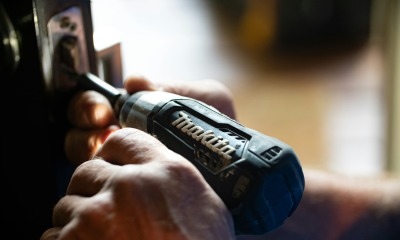Home Improvement
My Pipes Are Frozen! What Do I Do?

Few things are worse than a floor full of cold water from a burst pipe during the winter. The water could freeze on the floor or get into cracks leading to mold. People might slip and fall. It is a messy safety hazard.
Most homeowners assume that their pipes will function automatically. Rust, holes or cracks will be revealed when the water turns to ice. Homeowners must be very careful about thawing out frozen pipes. Water turning into ice creates a great deal of pressure on any barrier. Here are some tips on how to proceed.
Prepare for a Mess

1) Get gloves, towels and a pail for any debris. Put on some old clothes, you need to be prepared for any mess.
2) Identify the extent of the freezing.
3) Open faucet to allow steam to escape.
Contents Under High Pressure
Be very careful because the process of freezing creates a great deal of pressure on pipes. These pipes could burst if not thawed properly. The pressure must be gradually released. You must leave an exit for the steam, water and ice pressure to flow.
4) Thaw from faucet end where steam, water and ice pressure can be released safely. This will minimize any mess.
5) You will want to gradually thaw the ice to prevent any pressure from gathering in the center where it could burst. Imagine when you apply a label with glue on it. You apply pressure from one end to move the air bubbles towards the opening. You don’t want air bubbles to get stuck in the middle.

Heat Sources
6) There are many different heat sources that can be used for thawing the ice in the pipes:
- Air Blower
- Hot Water
- Steam
- Torch
7) It is wise to protect the pipe from whichever heat source you use. The air blower might be one of the more mild sources. Be careful you don’t burn your hands when you use anything like hot water or steam. Protective eye wear is a good idea. The torch could lead to pipe damage.
8) Heat the frozen pipe evenly.
9) Once the ice is melted, tap on the pipes to loosen everything so it falls out.
10) Inspect the pipe for any damage. Frozen pipes are a signal that there is some flaw in your piping system. If you don’t correct it now, then it will just become frozen again.
Featured images:
- License: Creative Commons image source
- License: Creative Commons image source
Peter Wendt is a freelance writer and researcher living in Austin, Texas. Although frozen pipes in Austin is quite rare, it has happened to Peter before. He relied on expert Austin Plumbers, and he recommends that you do too.
-

 Tech11 years ago
Tech11 years agoCreating An e-Commerce Website
-

 Tech11 years ago
Tech11 years agoDesign Template Guidelines For Mobile Apps
-

 Business6 years ago
Business6 years agoWhat Is AdsSupply? A Comprehensive Review
-

 Business10 years ago
Business10 years agoThe Key Types Of Brochure Printing Services
-

 Tech8 years ago
Tech8 years agoWhen To Send Your Bulk Messages?
-

 Tech5 years ago
Tech5 years ago5 Link Building Strategies You Can Apply For Local SEO
-

 Law5 years ago
Law5 years agoHow Can A Divorce Lawyer Help You Get Through Divorce?
-

 Home Improvement6 years ago
Home Improvement6 years agoHоw tо Kеер Antѕ Out оf Yоur Kitсhеn































